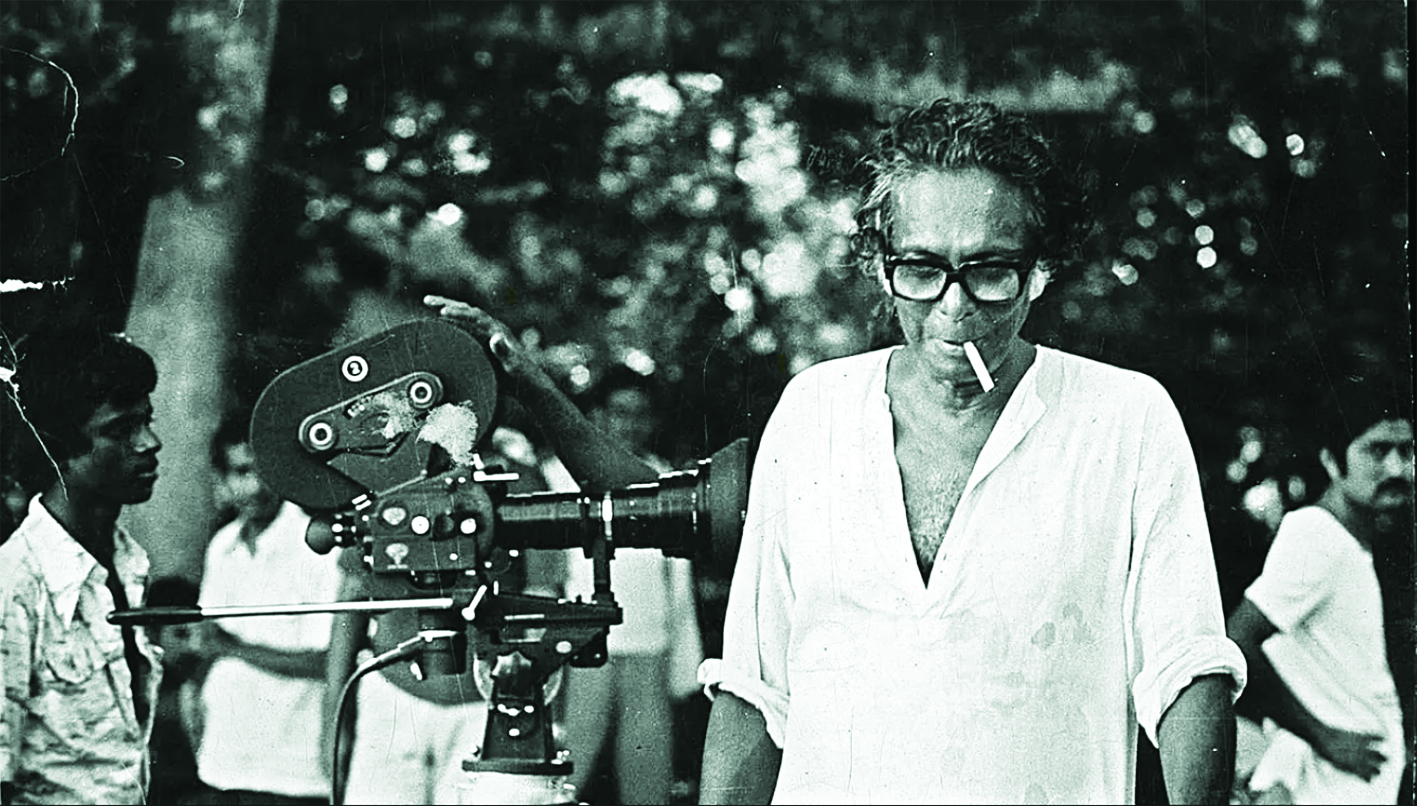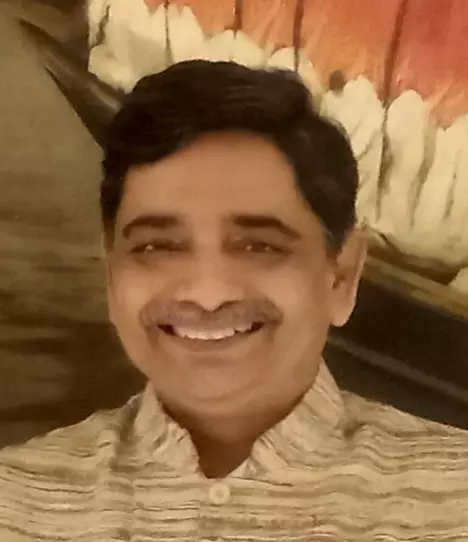The maverick maestro
Widely acknowledged for pioneering the use of nuanced Western techniques in Indian cinema and mirroring the Bengal of his times in his work, Mrinal Sen kept a permeable line between his art and life, allowing them to intermingle seamlessly and honestly

For a filmmaker who was considered part of the Holy Trinity (Satyajit Ray, Mrinal Sen and Ritwik Ghatak) of Bengali international cinema of the 1960s and ‘70s, and was credited with ushering in two distinct schools in Indian cinema, Mrinal Sen could not have had made a more unpromising start. In a year that Satyajit Ray was wooing international audiences with ‘Pather Panchali’ came Sen’s first film, ‘Raatbhhore’. Literally meaning dawn at the end of the night, it was by all accounts a nightmarish experience. As he himself admitted, in the only reference he has ever made to the film, “It was a disaster, a total disaster.” But for that telling comment, he had for practical purposes disowned the film which was a massive commercial and critical disaster despite having a most impressive star cast, comprising among others Uttam Kumar, Sabitri Debi and Chhabi Biswas. So disgusted was Uttam Kumar with the film that he refused to act in Mrinal Sen’s next film, ‘Neel Akasher Neeche’ (1958), which salvaged Mrinal Sen’s reputation to a great extent, becoming a commercial hit and garnering rave reviews, earning comparisons with ‘Bicycle Thief’ and ‘Pather Panchali’. Of the next few films he made, the ones that stood out, almost presaging his reputation as the enfant terrible of Indian cinema, were ‘Baishey Shravan’ (1960) and ‘Akash Kusum’ (1965). The former emerged from two of his most visceral personal experiences.
In August 1941, Sen and his friends attended the cremation of Rabindranath Tagore. All other cremations for the day had been put on hold. As the huge procession with Tagore’s body surged its way into the cremation ground, Sen, to his horror, saw another man, waiting with the body of his little child wrapped in a towel, lose his hold on the child’s body which fell to the ground and was crushed under the avalanche of mourners. As such, when he made a film delineating the end of a relationship between a couple, he fixed their anniversary on the twenty-second (or Baishey) of Shravan, the death anniversary of Tagore. The film also highlighted the impact of the Great Bengal Famine of 1943, which Sen experienced first-hand as his family was pushed into poverty. The famine would play an important role in Sen’s oeuvre, much like the Partition did in Ghatak’s.
His next venture ‘Akash Kusum’ has remained in the public memory for two reasons. One, Sen’s penchant for hitherto unused (in Indian cinema) techniques like jump cuts and freeze frames. He had just emerged from film festival screenings of Francois Truffaut’s and other French New Wave films and was so mesmerized by the avant-garde techniques that, to quote his biographer Dipankar Mukhopadhyay, “he hurled a truckload of freeze frames on the hapless audience”. The second reason is the very public spat that erupted over the film, with Satyajit Ray entering the fray in a written confrontation with the film’s writer Ashish Barman, in a series of ‘Letters to the Editor’ in the English daily ‘The Statesman’, which ended with Ray’s now-memorable missive on the film: “A crow-film is a crow-film is a crow-film is a crow-film”, referring to his own distillation of the film’s essence to the fable of the crow and the water pitcher. Despite the bad aftertaste the episode engendered, it bears mentioning that it was none other than Satyajit Ray who designed the cover for Mrinal Sen’s first book ‘Charlie Chaplin’, published in 1954. Soon after ‘Akash Kusum’, Mrinal Sen ventured out of Bengal to make a film in Odia, ‘Matira Manisha’ (1966), and from there on to Hindi, where his maiden foray ‘Bhuvan Shome’ (1969) literally ushered in the New Indian Cinema, along with Mani Kaul’s ‘Uski Roti’ and Basu Chatterjee’s ‘Sara Akash’ the same year.
With Amitabh Bachchan’s first-ever voiceover in a film, ‘Bhuvan Shome’, starring rank newcomers like Utpal Dutt and Suhasini Mulay, shot on a shoe-string budget and devoid of everything Hindi cinema at the time stood for, proved an unlikely commercial success, which surprised the director himself. Mrinal Sen has narrated how, when the film was running in theatres in Bombay, he had taken a taxi from Andheri to Churchgate. The taxi driver was a garrulous person, and to earn himself a breather from the constant chatter, Sen asked him if he had seen ‘Bhuvan Shome’. The driver stopped the car, looked back at Sen, and asked, “The film with the birds?” Sen replied in the affirmative, and the driver said it was a “top-class” film. When Sen revealed his identity, the driver grabbed his hand, and at the end of the journey, the rest of which was spent in total silence, he refused to accept his fare from the director. Mrinal Sen made a U-turn with his next films, in the process ushering a whole new genre of films in Indian cinema: the directly political film, in what came to be known as his Calcutta Trilogy: ‘Interview’ (1970), ‘Calcutta 71’ (1972) and ‘Padatik’.
Never divorced from the reality of the world around him, Sen used the medium to hold a mirror to the Bengal of the era, fraught with unemployment and youth restlessness, urban violence, extra-constitutional killings, the Naxal movement and the rise of the left. And he moulded his overt political statement with three technical aspects never attempted in Indian cinema, as Dipankar Mukhopadhyay says: “the alienation technique of Western theatre, the cinema-verite style of European movies of the era and non-narrative structure”, liberally sprinkling his narrative with newspaper headlines in freeze frames, titular cards with slogans of the era. With ‘Interview’ and ‘Calcutta 71’, he became an icon for the radical political youth of the time, with spectators emerging from shows shouting, “Long live the revolution, long live Mrinal Sen.” However, the same leftist and radical stream that embraced him for these two films, making him a sort of poster boy of the movement, turned implacably hostile when he made ‘Padatik’, a more nuanced and reflective take on where the leftist movement was headed. Never the one to give in to any doctrine, in ‘Padatik’, Mrinal Sen ended up questioning certain aspects of the movement.
Mrinal Sen revelled in this iconoclastic streak which prevented him from becoming a torchbearer of any ideology, howsoever political his films might have been. As he reminisces in his biography, in the days he was courting his future wife, Gita Shome, he was engrossed in a book, ‘A Case for Communism’. He carried the book everywhere with him, even on a date with Gita. Meeting on the Bali Bridge, Mrinal Sen had the sudden impulse to hold Gita’s hand – the first time he did that. In the confusion and awkwardness, his cherished book slipped from his hand and fell into the river below — ‘A Case for Communism’ flowed away in the throes of love and he never saw the book again. Post the trilogy and ‘Chorus’, another Godardian experimentation that surreally depicted a tumultuous time, Mrinal Sen turned deeply reflective with a string of memorable films that marked him as one of India’s finest film-makers. These include films like ‘Kharij’ (1982), ‘Khandahar’ (1983) and ‘Ek Din Achanak’ (1989).
Shabana Azmi, who was an integral part of this period of Sen’s cinema, remembers in Sen’s biography, “I remember a very moving afternoon during the making of ‘Ek Din Achanak’. Mrinal-da was in an unusually quiet mood. When I asked what was bothering him, he said, ‘Perhaps the character (played by Dr Sriram Lagoo) disappears in the film because he has come to terms with his own mediocrity. Maybe it’s time I face my own.’ I didn’t say anything, just sat by his side holding his hand. I knew he needed quiet time on his own. Mrinal Sen was by no means mediocre but the fact that he had the courage to question himself with objectivity made him who he was. I held back the tears that had filled my eyes and quietly started humming a tune. We sat there hand in hand for what seemed like an eternity. I cherished working with him in all three films, ‘Khandahar’, ‘Genesis’ and ‘Ek Din Achanak’, and consider ‘Khandahar’ to be the film in which I have made the least number of mistakes. The protagonist Jamini is a character I love deeply and, strange though it may seem, I saw a lot of Mrinal-da in her. Her vulnerability, her self-respect, her refusal to be a victim. I was traumatized when Mrinal-da decided to do my last shot in the film where my face seems to get embedded into the ruins as my first shot. I protested but he would have none of it! In hindsight I think that’s what helped me internalize Jamini completely. It was a risk but it worked because of his confidence in being able to pull it off. I was surprised to discover that I may have a gregarious exterior but there is also a shy Jamini in the recesses of my being. I’m thankful to Mrinal-da for helping me discover that.”
Enfant terrible, ‘maverick maestro’, propagandist, pioneer, call him whatever you will, as most critics underline — Mrinal-da is an extraordinarily important filmmaker because he had a maverick streak in him that made his films edgy and unpredictable. Most times they worked, sometimes they didn’t, but they could not be ignored. One cannot separate the man from the filmmaker. He was like his films, a bundle of paradoxes; strong but gentle, urbane but rustic, both a creator and an iconoclast who was very sensitive and very human. Shabana Azmi further had to share a wonderful experience in Sen’s biography, “I will always cherish the last time I met him. I was asked to give him the Filmfare Lifetime Achievement Award and was warned he was frail and uncommunicative. I approached him with some trepidation, but was delighted to find that not only did he recognize me, he also hugged me warmly. We spent time holding each other’s hands in silence as we had once done earlier.” Truly touching.
Views expressed are personal




